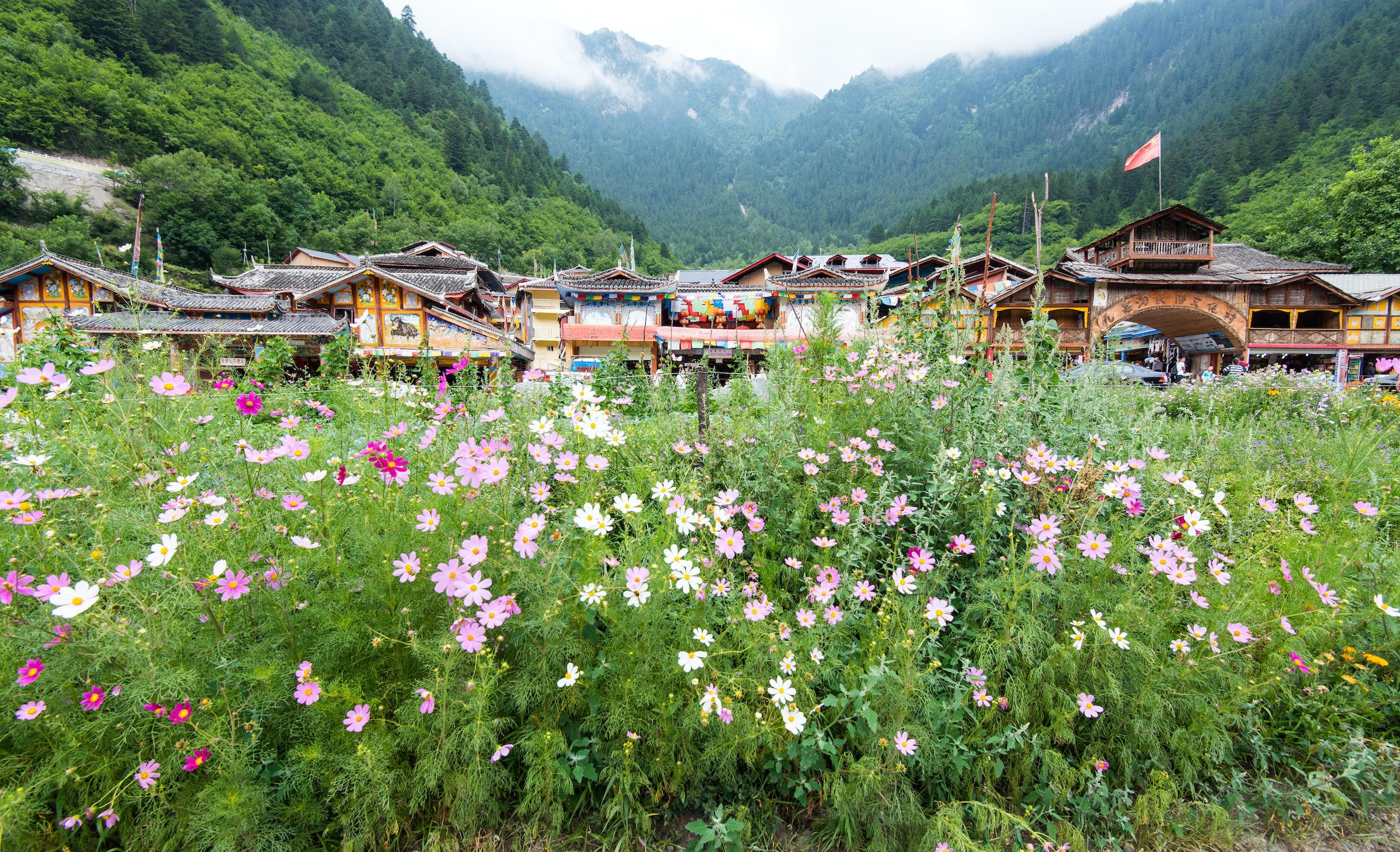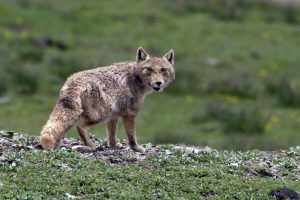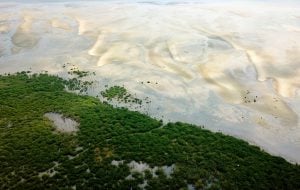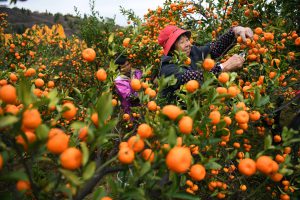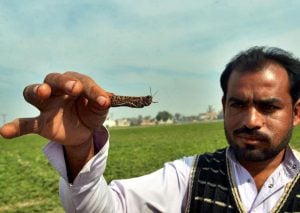Jiuzhaigou National Nature Reserve is one of China’s most popular tourist attractions, drawing more than five million visitors per year to the sparsely populated mountains of north-western Sichuan. The reserve has been home to farmer-herders for thousands of years, but to conserve the biodiversity and scenic quality of the reserve, park policies prohibit residents from farming, herding and wood cutting.
Is this the right approach? Recent research by geologists, ecologists, archaeologists and social anthropologists suggests otherwise: long-term human habitation has preserved and enhanced biodiversity while stopping human subsistence activities has diminished it.
For the 310 yuan (US$44) price of a two-day ticket, you can board natural gas-burning “green” buses or wander sturdy, clean boardwalks to view the jagged mountains, clear lakes, lush wetlands and travertine waterfalls several hundred metres wide. These are particularly enticing when glowing with fall colour or, for the hardy, half-frozen in the winter. You can stop in little towns in the valley to buy local goods and Tibetan souvenirs from local people who were once farmers and herders. In the evening, outside the reserve, you can eat Sichuan-style or modified Tibetan-style cuisine at one of the numerous restaurants and perhaps take in a highly stylised Tibetan culture show, conveniently presented in standard Chinese.
Jiuzhaigou’s popular appeal depends on its reputation as a natural landscape quite unlike China’s crowded cities or heavily fertilised and increasingly mechanised farmlands. To this end, local authorities have severely restricted the subsistence activities of the thousand-or-so Amdo Tibetans who originally inhabited the settlements that gave the valley the name Jiuzhaigou (Nine Villages Valley) and still live there today. Since 1999, local people can no longer grow the barley, buckwheat, beans and corn that provided their basic living. And since 2001 they can no longer herd animals in the high meadows above the treeline or in the fallow and abandoned fields within the forested landscape near the villages. Nor are they allowed to cut and gather firewood to feed the stoves that warm their houses and cook their food, or to cut trees to build their houses.
Humans have lived in the Jiuzhaigou area much longer than previously thought – at least 3,500 years
The authorities have justified removing most of the traditional human impact from the landscape as a means of preserving its biodiversity. This would seem to make sense. A comprehensive survey of Jiuzhaigou conducted by earth scientists from many institutions in Sichuan found 1,950 species of plants, along with many animals – at least 50 of them rare or endangered. Such biodiversity warrants Jiuzhaigou’s status as a regional and national treasure.
Believing that humans had only lived in the valley for the last 300 years or so, and that their footprint had been relatively light, authorities decided to reduce or even eliminate human impact. Industrial logging and other extractive activities had also caused changes in forested and mountainous landscapes in the 1960s and ’70s. The official solution, both ecologically and aesthetically, was to prohibit extractive activities as well as subsistence farming and grazing, and to restore meadows and fields to forests. Authorities believed that this would ensure the biodiversity of the reserve for future generations.
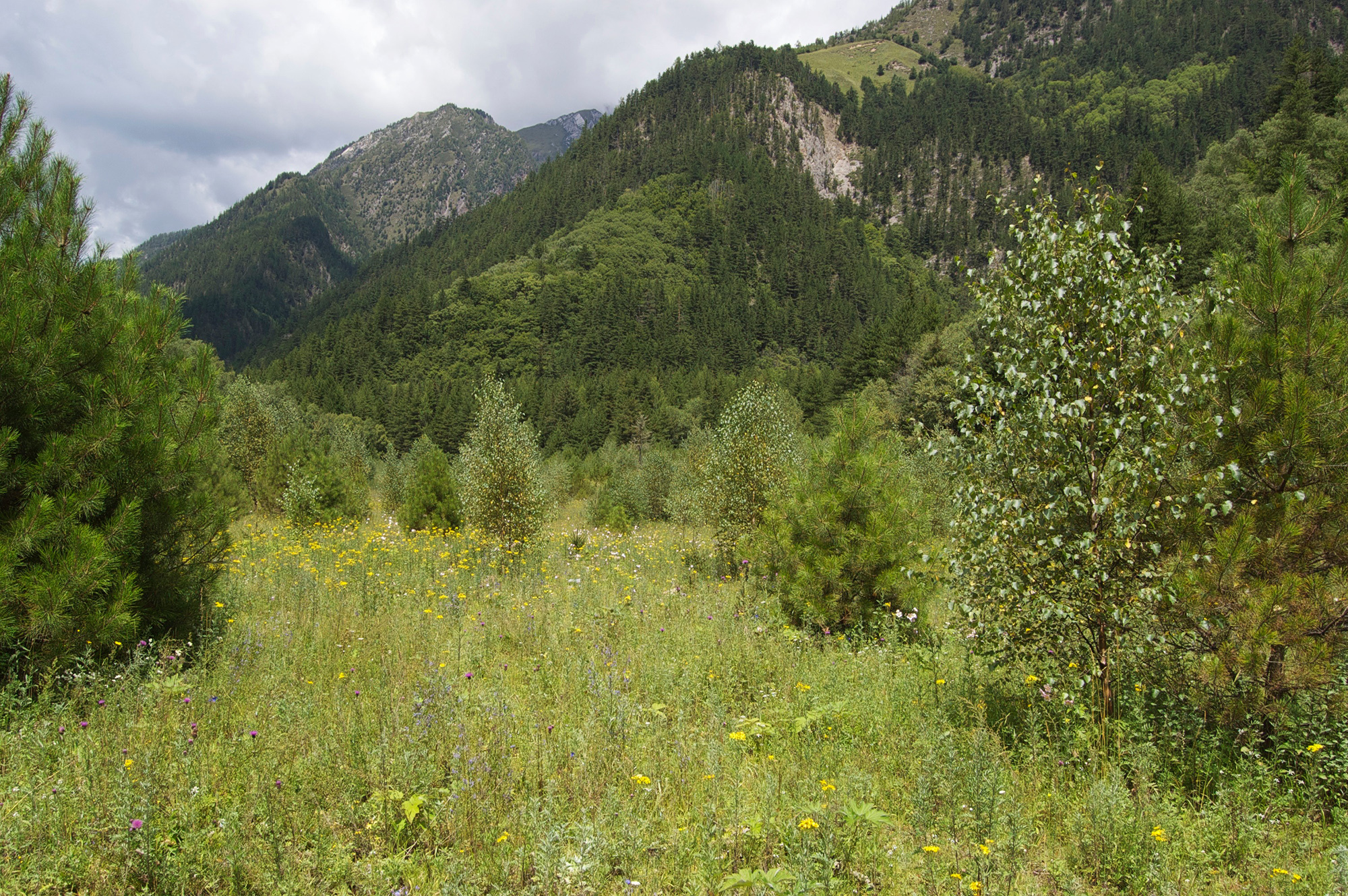
A meadow in Jiuzhaigou back in 2015. Conifers have been overtaking areas formerly kept open by rotational farming and animal grazing (Image: Tom Hinckley)
Humans can increase biodiversity
Our recent research questions this view. For one thing, humans have lived in the area much longer than previously thought – at least 3,500 years. More importantly, their traditional land use practices have maintained a patchy landscape of deciduous and evergreen forests, high mountain grasslands, lowland meadows, farmland and wetlands that probably allowed animal and plant biodiversity to flourish. Allowing the area to “revert to nature” will likely diminish rather than enhance biodiversity.
Archaeological research on the Tibetan Plateau shows that foragers exploited this area as early as 30,000-40,000 years ago. The eastern margins of the plateau now contain a wide range of plant and animal resources that ancient foragers could have collected, including wild tubers, nuts, fruits and wild greens. Many of these plants thrive in areas that have been disturbed by human activities, such as fire. Archaeologists have not yet explored evidence for early mobile foragers in Jiuzhaigou specifically, but it is unlikely that foragers would have overlooked an area so rich in natural resources.
We have just begun to learn about the antiquity of human settlement in Jiuzhaigou itself. Beginning in 2005, archaeologists discovered charcoal in terrace profiles near recently abandoned villages – the first samples were dated at 800 years old and later samples at about 2,000 years, suggesting that people lived in the valley as early as the Han dynasty. In 2008, archaeologists from Sichuan University excavated a Han dynasty house in an area that had been farmed until the 1990s. Radiocarbon dating of wheat and barley from layers cut into the house revealed that humans had farmed there as early as 3,400 years ago. During the excavation, researchers unearthed a single sherd of painted pottery of the type produced by the Majiayao culture: millet farmers who flourished around 6,000 years ago. Villagers confirmed this Majiayao phase occupation when they found an intact urn nearby.
Moderate levels of disturbance, such as farming, herding, woodcutting and judicious use of fire, may enhance biodiversity
Preliminary findings from excavations in 2019 appear to confirm the Neolithic and early Bronze Age settlement history. Archaeologists discovered Neolithic and Bronze Age ceramics below a newly excavated Han dynasty house, and biological remains await confirmation by carbon dating.
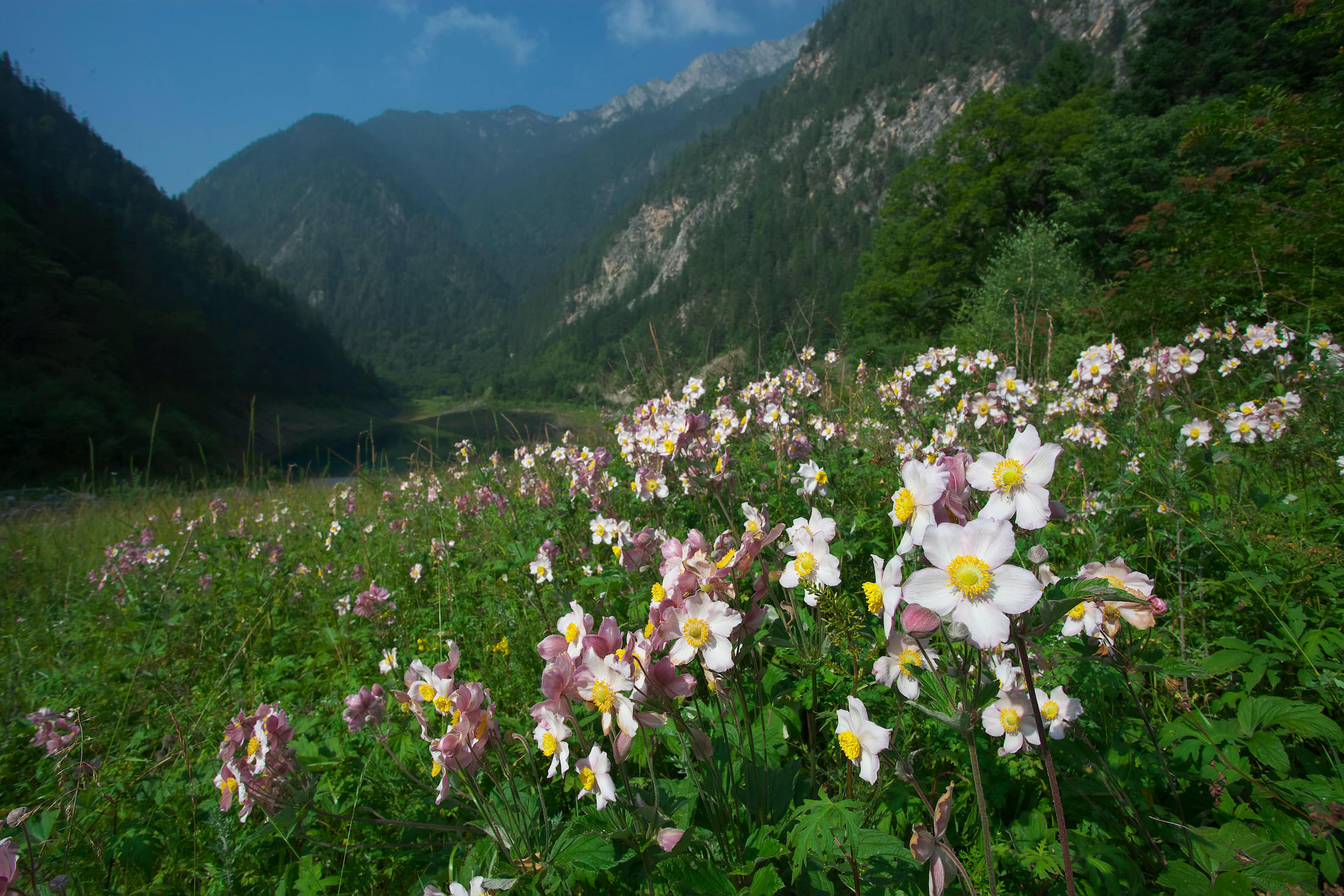
Grapeleaf anemones, Jiuzhaigou (Image: Alamy)
We know, then, that humans have lived at Jiuzhaigou for thousands of years. We also know that the reserve has impressive biodiversity. The “Intermediate Disturbance Hypothesis” in landscape ecology may help us connect these two facts. If people modify a landscape severely and frequently – for instance, turning a forest into a town or a monoculture farm – native diversity tends to decrease. On the other extreme, in a landscape with little or no disturbance, diverse patches will become uniform, and dominant species will tend to crowd out others. Moderate levels of disturbance, such as the inhabitants of Jiuzhaigou carried out through farming, herding, woodcutting and judicious use of fire, may enhance diversity.
Evidence from studies combining remote sensing, quantitative ecology and ethnographic interviews, supports this hypothesis. First, patch diversity has decreased since the reserve administration eliminated farming, herding and woodcutting. Most tellingly, meadows, which villagers traditionally kept open by rotational farming and by grazing their animals on fallow and abandoned fields, shrunk dramatically between 2005 and 2015. In addition, patchy forests of deciduous trees (better for firewood) and conifers (better for construction) are increasingly dominated by conifers. Second, since many of the reserve’s plant and animal species live only in these fields and meadows, not in forests, loss of habitat for these organisms endangers their survival. Third and most important, villagers still recall what life was like before their subsistence activities stopped: they consciously kept the forests mixed, the fields and meadows open, not just to farm and graze, but to have access to medicinal plants, game animals, and even the aesthetic pleasure of looking out at a “well-used” landscape. The patchy landscape has cultural as well as economic value for local people, and they mourn its passing.
As attached as they are to the soon-to-vanish diverse landscape of Jiuzhaigou, few local people would now go back to their previous livelihood. Shares of tourism income and opportunities to run small businesses have made most of them quite prosperous, with large, neo-traditional houses, cars, and children in exclusive schools as far away as Chengdu. No one misses the hard work of farming, but many are nostalgic for the cultural belonging of these landscapes. They particularly resent having to give up their animals (though some of them still surreptitiously herd yaks and sheep on the high grasslands) and having to haul wood from far away to fuel their traditional stoves.
What lessons can we learn from this history of a small but diverse ecosystem? First, during the Maoist period and the early Reforms, the Chinese state devastated many traditional landscapes for resource extraction. But policy has perhaps now swung too far in the other direction by assuming all human activity is “anti-nature”. Second, ecosystems, including those that people share with other species, are not static. Besides counting and documenting species, managers need to consider these species as parts of ecosystems connected at various scales of space and time, and understand the disturbance processes that influence species diversity. Finally, there is more than one kind of science. Traditional knowledge can sometimes be a corrective to, and even more often, a necessary complement to quantitative science. People living a livelihood that has been successful and sustainable in a place for at least 6,000 years really do know something about their home.
Read more from China Dialogue’s Environmental History Series
